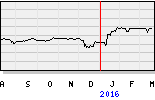
Significant market potential for continuous fiber reinforced thermoplastics
Objective: Rapid availability of new materials for automotive mass production
TenCate Advanced Composites and BASF have entered into a strategic alliance to cooperate on the development, production and commercialization of thermoplastic composite materials suitable for high-volume vehicle production.
The main goal of this partnership is to offer car manufacturers custom-engineered solutions for high-performance composite structures, which enable this industry to further reduce weight and carbon dioxide emission. The growing need of the automotive industry for composite materials used in mass production calls for a rapid development of materials and manufacturing processes.
TenCate Advanced Composites has a leading market position in continuous fiber reinforced thermoplastic composites with the TenCate Cetex® product portfolio, currently mainly used for aircraft structures and interiors. At present new aircraft such as the Airbus A380, A350 and Boeing 787 are the main users of such material.
BASF is the leading chemical company with an extensive network in the automotive industry. By combining the capabilities of both BASF and TenCate in automotive composite solutions, the required developments will be accelerated.
Strategic alliance
In this strategic alliance, BASF will contribute its comprehensive know-how in the production and formulation of thermoplastic resins in order to develop special variants of its Ultramid® (PA), Ultradur® (PBT) and Ultrason® (PESU) product lines. TenCate Advanced Composites joins in with their expertise in composite manufacturing. Together both companies are dedicated to automotive composite materials (UD-tapes, prepregs and laminates) based on these specialty resin systems.
"The next major advance in lightweight automotive constructions will not be possible without a dramatic reduction in processing costs. This can be accomplished by using continuous fiber reinforced thermoplastic composites. The breakthrough for composites to mass production, however, has not yet been made. By working together with TenCate, we intend to jointly achieve this breakthrough", explains Melanie Maas-Brunner, successor to Willy Hoven-Nievelstein and new head of the Engineering Plastics Europe business unit of BASF in Germany.
"TenCate Cetex® laminates and prepregs have long been applied in commercial aircraft constructions, and are increasingly used in industrial manufacturing processes. Now, TenCate intends to expand its activities in the automotive industry. We are looking forward to this joint effort in making new materials rapidly available for automotive mass production", says Frank Meurs, group director of TenCate Advanced Composites EMEA.
Advantages of thermoplastic composite materials
Compared to metal parts, fiber reinforced plastic composites can be 30 to 50 % lighter. Thermoplastic composites help car manufacturers economize on the fuel consumption of automobiles and enable the industry to safe costs. Due to the ease of thermoplastic processing, these advanced materials will dramatically reduce production cycle times, have no limitations in shelf life and can be recycled. Thus mass production becomes accessible. Much experience has been built up over the last decades in connection with welding technologies to connect composites materials into complex structures and to integrate these components and structural parts into multi-material end-products. Target applications are semi-structural parts as well as primary structures in car bodies and chassis.
Thermoplastic laminates with continuous fiber reinforcement are woven or non-woven fabrics impregnated with resins and formed into sheets, which are extremely light yet very strong. UD-tapes, another product class, make full use of the anisotropic nature of uni-directionally (UD) oriented impregnated fibers. In a second step, these semi-finished products can be formed into more complex parts and overmolded by means of injection molding. This combination results in components that are enhanced by a high degree of functional integration.
